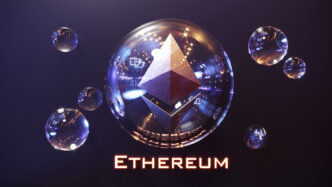The rise of non-fungible tokens (NFTs) has revolutionized the world of digital art, and Ethereum plays a pivotal role in this transformation. NFTs are unique digital assets that represent ownership of a specific item or piece of content, such as artwork, music, or videos. Ethereum’s smart contract capabilities have made it the platform of choice for creating and trading NFTs.
What Are NFTs?
NFTs are tokens that exist on a blockchain and are used to represent ownership of digital or physical assets. Unlike cryptocurrencies like Bitcoin, which are interchangeable, NFTs are one-of-a-kind and cannot be replicated. This uniqueness makes them perfect for representing digital art, collectibles, and other scarce items.
Ethereum’s Role in the NFT Boom
Ethereum’s smart contracts provide the underlying technology for NFTs. These self-executing contracts automatically execute terms of an agreement when certain conditions are met. In the case of NFTs, Ethereum’s smart contracts ensure that ownership, provenance, and transfer of digital art are securely recorded on the blockchain.
By using Ethereum’s ERC-721 and ERC-1155 token standards, artists can create NFTs that represent their work, and buyers can securely own a piece of digital art. Ethereum’s decentralized nature ensures that NFTs are not controlled by a single entity, allowing artists to retain control over their creations.
The Impact of NFTs on the Art Market
NFTs have disrupted the traditional art market by enabling artists to sell digital works directly to collectors, bypassing galleries and auction houses. This has opened up new opportunities for artists, allowing them to monetize their creations in ways previously unavailable. NFTs also enable fractional ownership, meaning that multiple buyers can own a share of a single piece of digital art.
Moreover, NFTs provide artists with ongoing revenue through royalties. Whenever an NFT is resold, the artist can receive a percentage of the sale price, ensuring that they continue to benefit from their work as it appreciates in value.
Challenges and the Future of NFTs
While NFTs have brought unprecedented attention to the digital art world, there are challenges that need to be addressed. Concerns over environmental impact, high transaction fees, and the speculative nature of the market remain, but Ethereum’s transition to PoS and the development of Layer 2 solutions will help address these issues.
As NFTs continue to gain popularity, Ethereum will remain at the forefront of this revolution, providing artists and collectors with the tools needed to participate in the rapidly growing digital art market.













